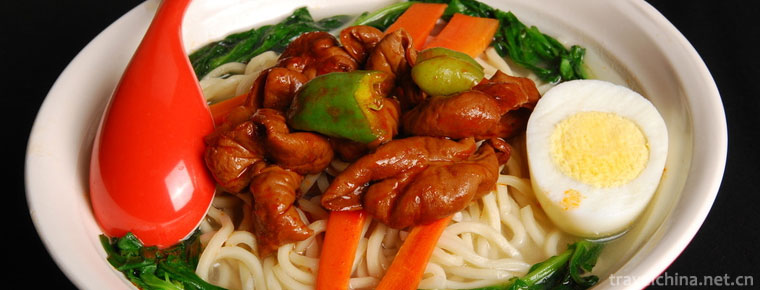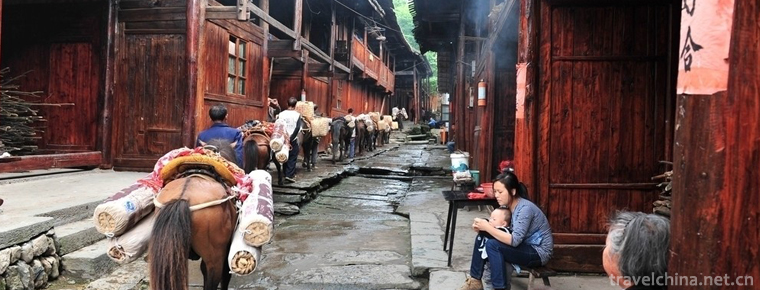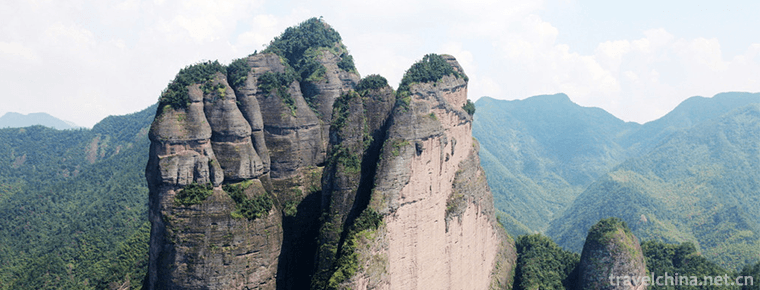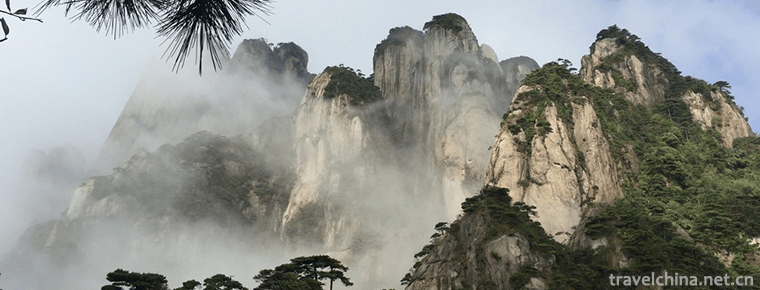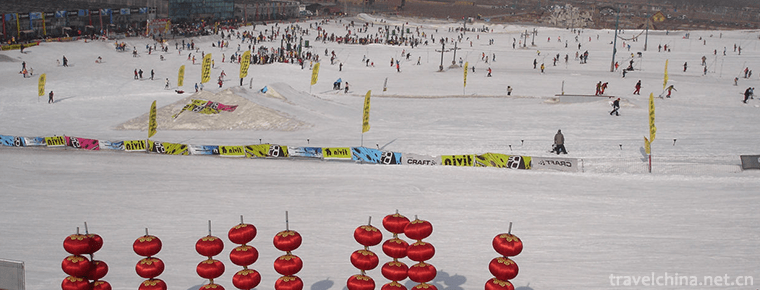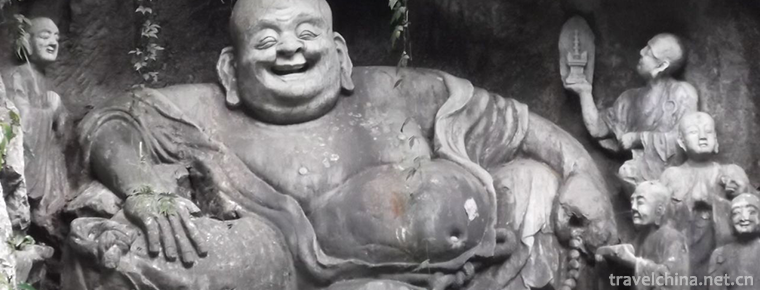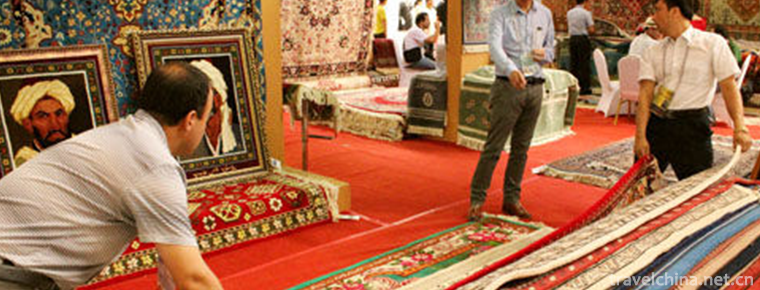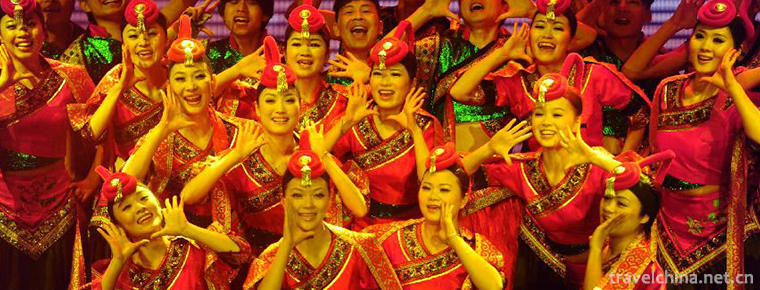Brodo
Brodo
Buyi Opera, a local traditional drama in Ceheng County, Guizhou Province, is one of the national intangible cultural heritage.
Buyi opera, known as "grain art" in Buyi language, is mainly distributed in the southern and southwestern counties of Guizhou where Buyi people live together, such as Ceheng, Anlong and Xingyi. It is influenced by the Han, Zhuang and Miao operas, singing Buyi music in Buyi language, and developing on the basis of eight-tone sitting and bench play. In Buyi Opera, life, dan, ugliness, king and general are divided into three parts. The stage scheduling of each character is three or five steps and one turn. During the singing process, they shuttle to each other. The form is lively and the style is simple.
On May 20, 2006, Buyi Opera was approved by the State Council of the People's Republic of China to be included in the first batch of national intangible cultural heritage lists with the heritage number IV-84.
historical origin
Buyi opera, still known as "local opera", Buyi language known as "Fu Yi", in 1953 with the establishment of the name of the Buyi ethnic group, known as Buyi opera. "A Brief History of the Buyi Nationality" said: "During the reign of Qianlong in the Qing Dynasty (1736 - 1795 AD), the Yangba in Hengzhou and the tie-up of Pu'an Prefecture (today's Xingyi) began to compile and perform Buyi Opera." The so-called compilation is only a slight alteration or supplement to some parts of the sacrificial lyrics and a recreational singing and dancing in wine and banquet. But she gave birth to the cone of Buyi opera. According to the Record of Xingyi County, "In the late Ming and early Qing Dynasties, the traditional sacrifices of Buyi people were mostly without masks. In the sacrifices of"Lao Mo"when dancing God, there were songs of folk stories similar to Zizi opera. After the five-year reform of Yongzheng in the Qing Dynasty (1727), Tusi Wang inherited his post as a pavilion. His family members, such as Zongzhi Luan Xiaowu, often invited people to take part in traditional sacrificial activities. Under the chairmanship of Lao Mo, some of his younger brothers were allowed to take part in traditional sacrificial activities until Jiaqing in the Qing Dynasty (1797). Wang Jinlong, a Tusi son surnamed Wang, set up private schools to educate children of the clan. On the one hand, he supplemented and adapted the songs in the sacrifice to the God of dance with the clan, and on the other hand, he added the plot characters to make recreational dancing and singing in the festival wine banquet. This is the budding period of Buyi opera.
The development of Buyi opera is also the process of its separation from religion. "Xingyi County Chronicle" contains: "... Since then, Bouyei opera has taken shape, separated from sacrificial activities, appeared in Bajie people's questioning, and promoted the family drama of Wang surname family to be handed down from generation to generation in Wang's descendants. After several generations, it gradually divided into branches, accompanied by bands, and absorbed some sacrificial music to enrich the music cards. By the early days of Guangxu in the Qing Dynasty (AD 1875), it had taken the form of stage performances. In Guangxu 29 (1903), at the initiative of Wang Shoushan, a clan member, many people contributed money to produce a batch of clothes for the first time, set up a stage in the south of Bajie Old Town and performed on both sides of Nanpanjiang River.
In the early days of the founding of New China, the cultural departments of the government attached great importance to it and carried out frequent activities. During the Cultural Revolution, activities were interrupted. In 1983, a national cultural station was built and the Buyi Opera Team was reorganized.
Cultural characteristics
Musical tune
The musical tunes of Buyi Opera include Beijing Diao, , , , [Right Diao], , , , [Martial Arts Promotion Official Diao], , , , etc.
Accompaniment instrument
Accompaniment instruments mainly include pointed Huqin, Puzihuqin, flute, short flute, wood leaf, three strings, pipa, Yueqin and gongs, cymbals, drums, wooden fish, wrapped gongs, pony gongs and so on.
Performance procedure
There are fixed procedures for performing Buyi opera, which are generally composed of sacrifices, inviting ancestors to open boxes, descending Samsung, beating and adding officials, main drama, sweeping stage, sealing boxes and so on, in which the main part is the main part.
Footwork
In Buyi Opera, pupils and civil servants often take triangular steps; king takes four steps; martial generals swing on horses and bow on horses; clowns take three steps, one jump, one turn, one play step or monkey step; danjiao walks with tight legs, small triangle steps and swaying high and low steps.
Martial arts
The fighting of Buyi Opera is different because of the different succession of the theatrical troupes. There are simple expressions in the fighting. "Blocking Qiao" in the battle against Party A with weapons, passing over the head of Party B, for chopping and dodging; in the battle between "Blocking Ding" Chinese generals, two horses meet, Party A raises a gun and stabs the other side in the leg, Party B takes weapons to resist. In addition, there are "upper block and lower fork", "tie block" and "hit four doors" and so on. The Bouyei Opera Troupe, which was first described by Ji Heng and Naiyan, also blended Wushu and boxing such as Big Yongquan, Small Yongquan, Eight Diagrams Palm and Three-nunchaku, which formed the characteristics of Wushu.
Representative repertoire
The main drama of Buyi opera includes two categories: Buyi opera and transplanted opera. Buyi opera mainly tells Buyi legends and stories, including "March 3", "June 6", "Luo Xixing", "Two Empty Persons and Wealth". Both singing and Bai are in Buyi language, with strong national characteristics. The transplanted plays are mainly transplanted from Han folk tales, including Yutangchun, Python Snake, Qin Xianglian and Zhu Yingtai.
Inheritance and protection
Inheritance value
Buyi opera has the research value of history, folklore, religion, opera and so on. It has played an important role in the enrichment and perfection of Chinese culture.
Inheritance status
Due to the loss of performers, performances in all walks of life are gradually disappearing, and there is a lack of professional training among members of the Buyi theatre club, which has become a huge resistance for Buyi theatre to move towards systematization, specialization and dissemination fault.
Inheriting characters
Luo Guozong, male, Buyi nationality, born in 1926, is from Ceheng, Guizhou Province. The second batch of national intangible cultural heritage projects are representative inheritors of Buyi Opera.
Huang Chaobin, male, Buyi nationality, born in 1926, died in 2008, Ceheng, Guizhou Province. The second batch of national intangible cultural heritage projects are representative inheritors of Buyi Opera.
protective measures
(1) From 2006 to 2007: complete the census work in an all-round way; continue to do a good job in the education of minors; set up a training course on the performance skills of Buyi people's "grain art" (Buyi opera); jointly set up a training course on the performance skills of Buyi people's "grain art" (Buyi opera) with the Bureau of Education; strive to list the Buyi people's "grain art" (Buyi opera opera) as a local textbook. The second training course will be held.
(2) 2008: 1. Establishment of eight original ecological protection zones of Buyi "Guyi" (Buyi Opera). 2. Establishment of the Protection List of "Guyi" (Buyi Opera) of Buyi Nationality. 3. Hold the third training course; 4. Publish 7 townships of folk arts. The Buyi Opera, directed by the Buyi Opera Team of Naiyan Township, went deep into remote villages to perform for the masses.
(3) From 2009 to 2010: 1. Continue to do a good job in propaganda, education, research and inheritance through museums. 2. Improve the quality of Museum professionals. 3. Strengthen the collection and enrich the collection. 4. Continue to organize traditional skills training. 5. Complete the construction of Buyi "Guyi" (Buyi Opera) website. 6. To compile Buyi "Guyi" (Buyi Opera) Zhi, Buyi "Guyi" (Buyi Opera) script series, Buyi "Guyi" (Buyi Opera) opera score series, and Buyi "Guyi" (Buyi Opera) musical instrument series. 7. Organize training courses on traditional craftsmanship.
social influence
Honorary commendation
"Bai Sai Shuo" won the silver prize in 2008 Guizhou Bouyei Song and Dance Competition, and the Bouyei Pange sketch "Spring Brother and Autumn Sister" won the 2010 Colorful Guizhou Bronze Drum Award.
Important performance
From August 11 to 12, 2018, the 2008 Colorful Guizhou Culture and Art Festival "Non-Heritage Weekend Gathering" was co-sponsored by the Propaganda Department of the CPC Guizhou Provincial Committee, the Provincial Cultural Department, the Provincial Travel Committee and the Colorful Guizhou Cultural Industry Group. The exhibition was held in Guiyang by the Guizhou intangible cultural heritage protection center and the Guizhou Colorful Guizhou Cultural and Creative Industries Exposition Co., Ltd. The play was performed during this period.


-
Pork intestine Noodles
Pork intestine Noodles are famous traditional snacks in Sichuan.
Views: 198 Time 2018-10-12 -
Tea horse ancient road
Tea-horse ancient road refers to the folk international trade.
Views: 216 Time 2018-10-17 -
Jiang Lang Shan
Jianglangshan, formerly known as Yulangshan and Jinchunshan, is located in Shimen Town, Jiangshan City, Quzhou City, Zhejiang Province.
Views: 165 Time 2018-12-07 -
Sanqing Mountain Scenic Spot
Sanqing Mountain, also known as Shaohua Mountain and Yashan Mountain, is located at the junction of Yushan County and Dexing City, Shangrao City, Jiangxi Province.
Views: 192 Time 2018-12-08 -
Lianhuashan Ski Resort
Located in Zhangzhen, Shunyi District, Beijing, Lianhuashan Skiing Ground covers an area of more than 1 million square meters and was opened on December 19, 2003..
Views: 202 Time 2019-01-29 -
rime island
Wuluo Island, an island on the Songhua River, is located in the Manchu town of Ura Street, Longtan District, Jilin Province. The villages of Hantun and Zeng Tongtun in Manchu Town of Ura Street are th.
Views: 185 Time 2019-02-25 -
The Legend of the Cloth Bag Monk
From the end of Tang Dynasty to the Five Dynasties, the monk of Fenghua, Ningbo City, Zhejiang Province, named Tingzi, was an eminent monk of Hou Liang in the Five Dynasties.
Views: 380 Time 2019-04-04 -
Carpet Weaving Techniques
Uygur carpet is a handicraft with a long history and tradition. It integrates painting, sculpture, knitting, embroidery, printing and dyeing. Characteristic.
Views: 109 Time 2019-04-26 -
Printing and Dyeing Techniques of Blue Printed Cloth
The printing and dyeing technology of blue printed cloth is a kind of anti-dyeing and printing method of indigo printed cloth. The dye is extracted from Polygonum multiflorum..
Views: 230 Time 2019-05-11 -
She Nationality Folk Songs
She folk songs can be seen everywhere, expressed in the form of She language singing. Every Festival and festive day, singing soars. Even when working in the fields in the mountains and visiting relat.
Views: 336 Time 2019-06-14 -
Cultural corridor of Confucianism Buddhism and Taoism
Emei Mountain Confucian, Buddhist and Taoist cultural corridor inherits and develops Chinese traditional culture through different aspects, and excavates its own value and charm from Emei Mountain's historical culture, and highlights its connotation of "China's first mountain"..
Views: 146 Time 2020-10-15 -
Environmental protection in Mianyang
In 2018, the water quality of Fujiang, Kaijiang, Zijiang, Anchang River, Furong River, Tongkou River and Luban reservoir in Mianyang City accounted for 100% of the total water quality. Among them, Fujiang River, Tongkou River, Zijiang River and Anchang.
Views: 343 Time 2020-12-14
